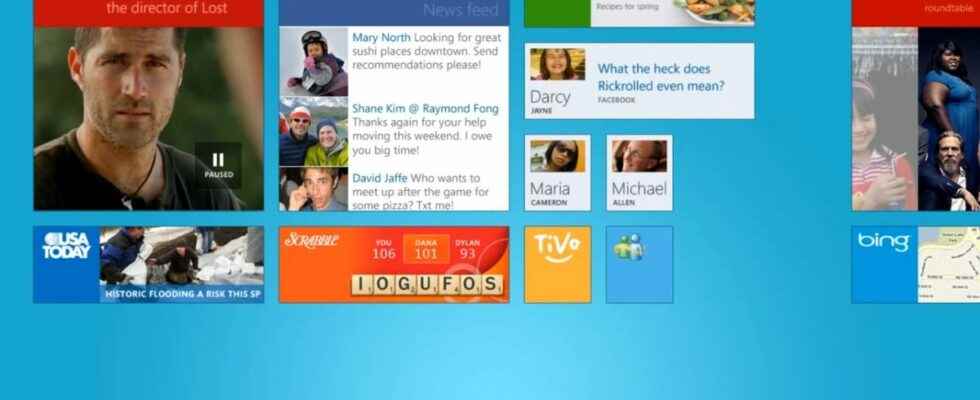So many changes for Windows since its first version in 1981. The release of Windows 11 last year was an opportunity for Microsoft to rethink the visual identity of its very popular operating system. But a recent version of Windows has remained even more memorable due to its radical choices in terms of design and ergonomics: Windows 8.
A video from 2010 resurfaces
A real break from Windows 7, the OS released in 2012 had tried to take the turn of mobile and tablets, without really succeeding. Its “Metro” interface, made up of tiles and widgets, failed to find its audience or even to offer a sufficiently coherent software experience. The demise of the famous “Start Menu” and traditional windowed apps has locked out many users and made Windows 8 one of the least adopted versions in Windows history. But the OS has not always looked like what we know today.
A video shared by Steven Sinofsky, a former Microsoft executive, shows what early versions of Windows 8 looked like. Shown to over 5,000 Microsoft employees in 2010, the video was intended to document and summarize the development of this whole new OS.
After two and a half minutes of photo slides against a background of sugary pop from the late 2000s, the first image of Windows 8 is shown. The interface is quite similar to what will come out two years later – even if the design is a little less polished – and reminds us how much Microsoft had bet everything on applications and widgets at the time. The dynamic “tiles” allowing quick access to features of Facebook, Netflix or Bing Maps are honored in a way that can only make you smile in hindsight.
Windows 8 with a “classic” desktop interface
More interesting though, a little later in the video we see a more “classic” desktop interface with a panel of widgets that looks like the one present in Windows 11 today. The Start menu is also included, as are applications pinned to the taskbar and the good old trash can icon. Many elements of this interface will later find their way into Windows 8.1, known as the update that brought back the Start menu and the classic Windows interface. In the few screenshots, we can also see a design halfway between Windows 7 and Windows 10.
For all the curious, the video is worth a look, if only to remember the time when Facebook, Internet Explorer and mobile applications were the precursors of a new way of approaching computing.
